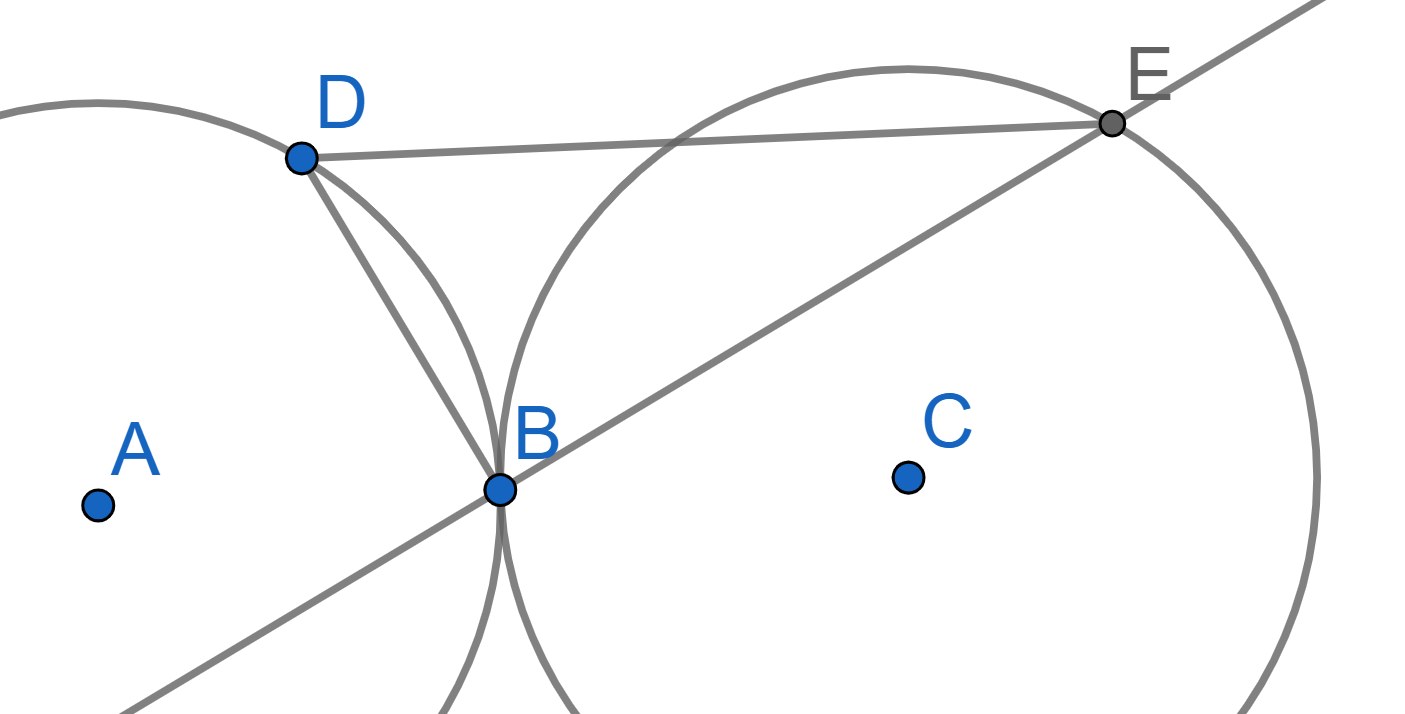Problems
Does a continuous function that takes every real value exactly 3 times exist?
Prove that a convex quadrilateral \(ICEF\) can have a circle inscribed into it if and only if \(IC+EH = CE+IF\).
Two circles of radius \(R\) touch at point \(B\). On one of them, point \(D\) is chosen and on the other point \(E\) is chosen. These points have a property of \(\angle DBE = 90^{\circ}\). Prove that \(DE = 2R\).

A \(3\times 4\) rectangle contains 6 points. Prove that amongst them there will be two points, such that the distance between them is no greater than \(\sqrt5\).
There are 25 points on a plane, and among any three of them there can be found two points with a distance between them of less than 1. Prove that there is a circle of radius 1 containing at least 13 of these points.
A unit square contains 51 points. Prove that it is always possible to cover three of them with a circle of radius \(\frac{1}{7}\).
What is the minimum number of points necessary to mark inside a convex \(n\)-gon, so that at least one marked point always lies inside any triangle whose vertices are the vertices of the polygon?
Several chords are drawn through a unit circle. Prove that if each diameter intersects with no more than \(k\) chords, then the total length of all the chords is less than \(\pi k\).
A square of side 15 contains 20 non-overlapping unit squares. Prove that it is possible to place a circle of radius 1 inside the large square, so that it does not overlap with any of the unit squares.
From the set of numbers 1 to \(2n\), \(n + 1\) numbers are chosen. Prove that among the chosen numbers there are two, one of which is divisible by another.